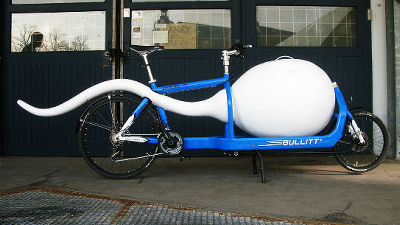China's experimental satellite succeeded in growing experiments of fertilized cells one step closer to universe-born "space · baby"

ByTORLEY
A very important element that determines whether mankind can advance into space "The birth of life in spaceWe are announcing that China has succeeded in the experiment leading to " Mouse embryo repeats division within the experimental facility launched in China's experimental satellite "Practice # 10 Satellite (SJ - 10)" launched,BlastocystIt has been revealed that it has reached a stage called "Yanban".
Embryos growing in space a 'giant leap' - China - Chinadaily.com.cn
http://www.chinadaily.com.cn/china/2016-04/18/content_24616857.htm
China claims a major breakthrough in making space babies | Ars Technica
http://arstechnica.com/science/2016/04/china-claims-a-major-breakthrough-in-making-space-babies/
On April 6, 2016, China launched Practice # 10 satellite from the JR Izumi Satellite Launch Center in Gansu Province. This satellite is equipped with about 20 types of experimental apparatuses to conduct experiments in the microgravity space of the universe, after the 12-day space flight, we succeeded in returning to the grassland area of Inner Mongolia Autonomous Region.

Experiments using mouse embryos were carried out among the experimental apparatuses installed in this satellite. First of all, in the experiment, we installed 6000 embryos of mouse growing in the 2 cell stage after fertilization in a device with a size of around microwave, and the growable environment was prepared. The state of the embryo before the experiment is like this.

After launch, it was found that some of the embryos in the microgravity space continued to grow, and the cell division was repeated to reach the stage of the blastocyst. The experimental apparatus was equipped with a high-resolution camera, which said that it had a mechanism to shoot the state of the cell every 4 hours and send it to the ground, so that the picture taken was also taken with that camera What was done.

Professor Aaron Hsueh of Stanford University's obstetrics and gynecology said Ars Technica needed to figure out how much cell actually had been successfully grown, "said Mr. Aaron Hsueh, I found out that it does not affect the results of this experiment. "
In the future, it is said that the results will be judged by investigating the actual cells returned to the ground in detail, but as pointed out by Professor Hsueh, actually how many cells are actually in the scutellum Whether it was able to grow to the stage of the cell is likely to be the key for the future. In this experiment, the growth process of the same number of cells is observed on the ground, and it is important how much difference will occur in the number of cells grown in both environments.
Chinese Academy of Sciences Animal Research InstituteDuan En-KuiProfessor Keun-ki said, "There is still a long way to go before humans settle into the universe, but until then we have to figure out whether human beings can continue breeding in the outer space.In this experiment , The most important step in reproductive activity has been proved that early stage embryo growth is possible in space, "he said.
Related Posts:







